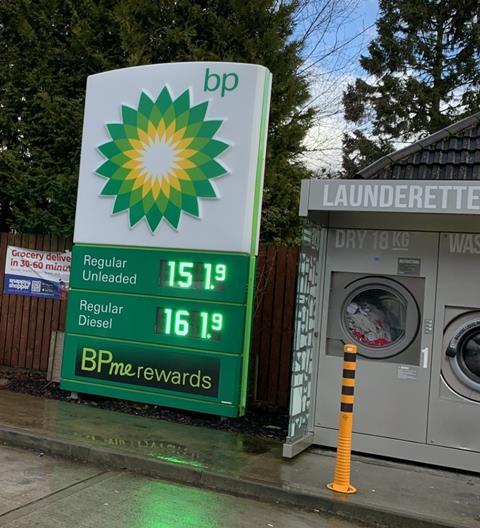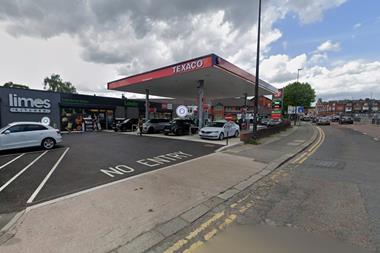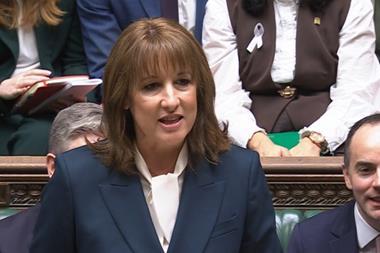- New real-time fuel price data intends to help drivers shop for fuel, via navigation apps, in-car devices and comparison websites
- Industry asked for views on new legal requirement to share prices within 30 minutes of a change
- Part of government action to further drive down pump prices by bringing transparency and competition back to the forecourts

Fuel retailers are exasperated as the government consults on a proposal to force them to post fuel price changes within 30 minutes, with one describing the plan as “using a hammer to crack a nut”.
Consumers, retailers, and other organisations are today (16 January), being asked for views on the government’s proposals for the new Pumpwatch scheme which would see all fuel stations across the country legally required to share real-time price information with an organisation to be appointed by the government.
The new Pumpwatch plans will make it a legal requirement for all UK fuel retailers to provide the data on a near-live basis to an organisation to be appointed by the government. Local authorities will be given powers to impose financial penalties on petrol stations that do not comply with the rules.
The Department for Energy Security and Net Zero (DESNZ) intends to contract an aggregator to manage the data, which will then be made publically available. Ministers hope that technology companies will then develop price comparison tools to present the information to motorists, via navigation apps, in-car devices and websites.
Richard Roberts, managing director of Trident Honda at Ottershaw, a forecourt and car dealership near J11 of the M25 at Woking, says that it is unfair to put this onus on forecourt operators.
“If we ever make a change it is automatically announced on our website within 10 minutes, sometimes in as little as three, and we are hardly hiding our prices. They are on a pole outside for everyone to see. Having to hand over this information to the government is a little bit over the top,” he says.
“The margin we make on fuel is not high, and no other business is jumped on for its prices like the fuel industry.”
Seb Hawtree, partner of Hawtree & Sons, which has a forecourt on the A30 near Shaftesbury, says: “It will be a faff, especially if an operator has multi sites and different people are having to update prices. We update the pole signs so I don’t see why we need to update an app. I’d ask how this will be checked. It seems ridiculous, almost like HFSS [high in fat, salt and sugar regulations] all over again with nobody checking on it.”
Since last August, a dozen major forecourt operators – including supermarkets Tesco, Sainsbury’s, Asda and Morrisons – have voluntarily provided fuel price data each day to the Competition and Markets Authority (CMA). Some news outlets and websites use this data to offer price comparisons.
The government, which wants to introduce more price transparency in fuel pricing to make it easier for motorists to shop around for the best prices, says that already there are signs that fairer deals are returning to forecourts. Fuel prices, it says, have fallen by an average of around 2p per litre every week between 13 November and 25 December, bringing petrol prices down to a level not seen since October 2021.
Energy Security Secretary Claire Coutinho says: “Our work on competition and transparency is working. Drivers are now paying the lowest average price at the pump for two years.
“We are forcing retailers to share live information on their prices within 30 minutes of any change in price, helping drivers to find the best deal at the pump.
“This will put motorists back in the driving seat and bring much-needed competition back to the forecourts.”
A similar statewide scheme in Queensland, Australia saw drivers save on average $93 (£48) per year, by making it easier for them to shop around for fuel, the government points out.
Petrol Retailers Association executive director Gordon Balmer says the PRA is working with government to get the best outcome for the fuel price transparency initiative.
”PRA has been actively engaged in collaborative efforts with DESNZ and the CMA to enhance fuel price transparency,” says Balmer.
“PRA members operate in a highly competitive market on razor-thin margins. I am pleased to see the government’s release of the road fuel transparency consultation, and we will continue to support them as they develop their final scheme.
“It is important that motorists have the ability to shop around and find the best deals available to them. The PRA will be responding to this consultation to ensure that the final fuel price transparency scheme is reliable and easy for both consumers and retailers to use.
“The PRA remains dedicated to fostering transparency and fair practices in the fuel industry, working collaboratively with relevant authorities to achieve a balanced and effective fuel price transparency initiative.”
Last year, a report by the CMA revealed some retailers had failed to pass on savings in oil prices.
At the end of 2023, the government appointed the CMA as the body responsible for monitoring the road fuel market, to increase transparency and competition in fuel pricing. The watchdog will also shine a light on any attempt from retailers to overcharge drivers, advising government on any further action required to make competition work well, says the government.
Commenting on the latest proposals, RAC fuel spokesman Simon Williams says: “This is a really important day as it should pave the way for fairer fuel pricing for everyone who drives.
“Sadly, there have been far too many occasions where drivers have lost out at the pumps when wholesale prices have fallen significantly and those reductions haven’t been passed on quickly enough or fully enough by retailers.”
The Pumpwatch plans will be consulted on for eight weeks, with consumers, retailers, and other organisations asked for views.


























